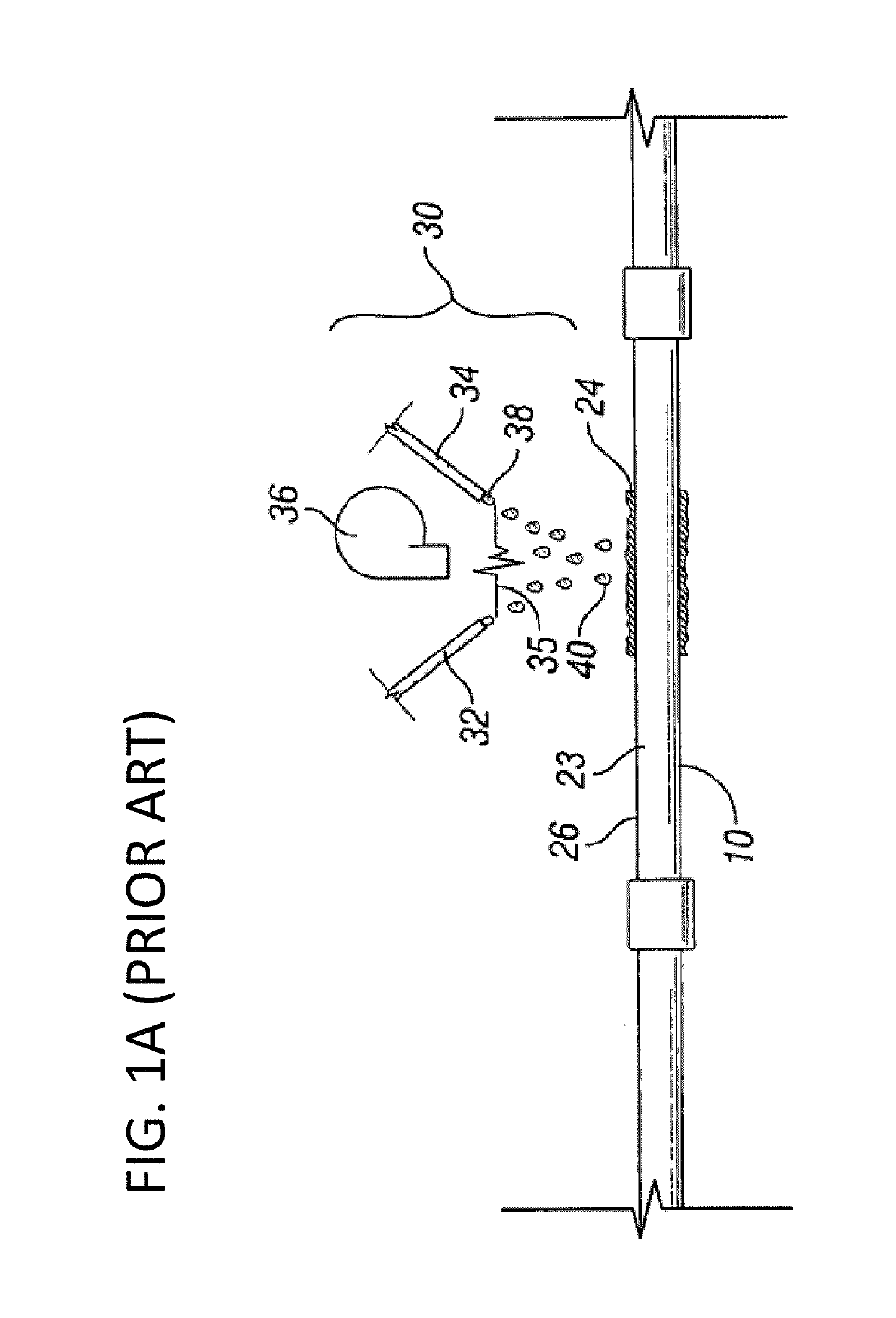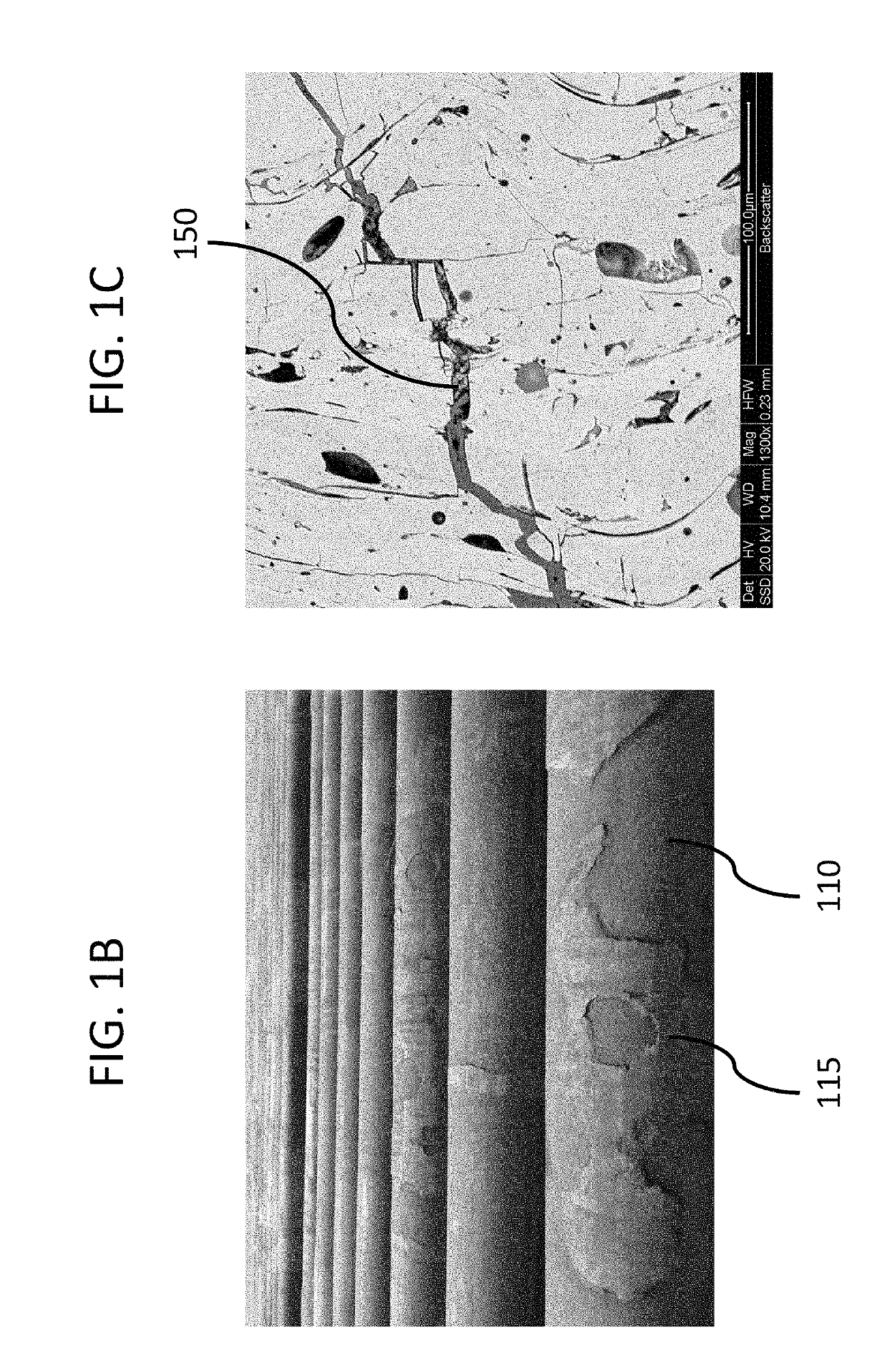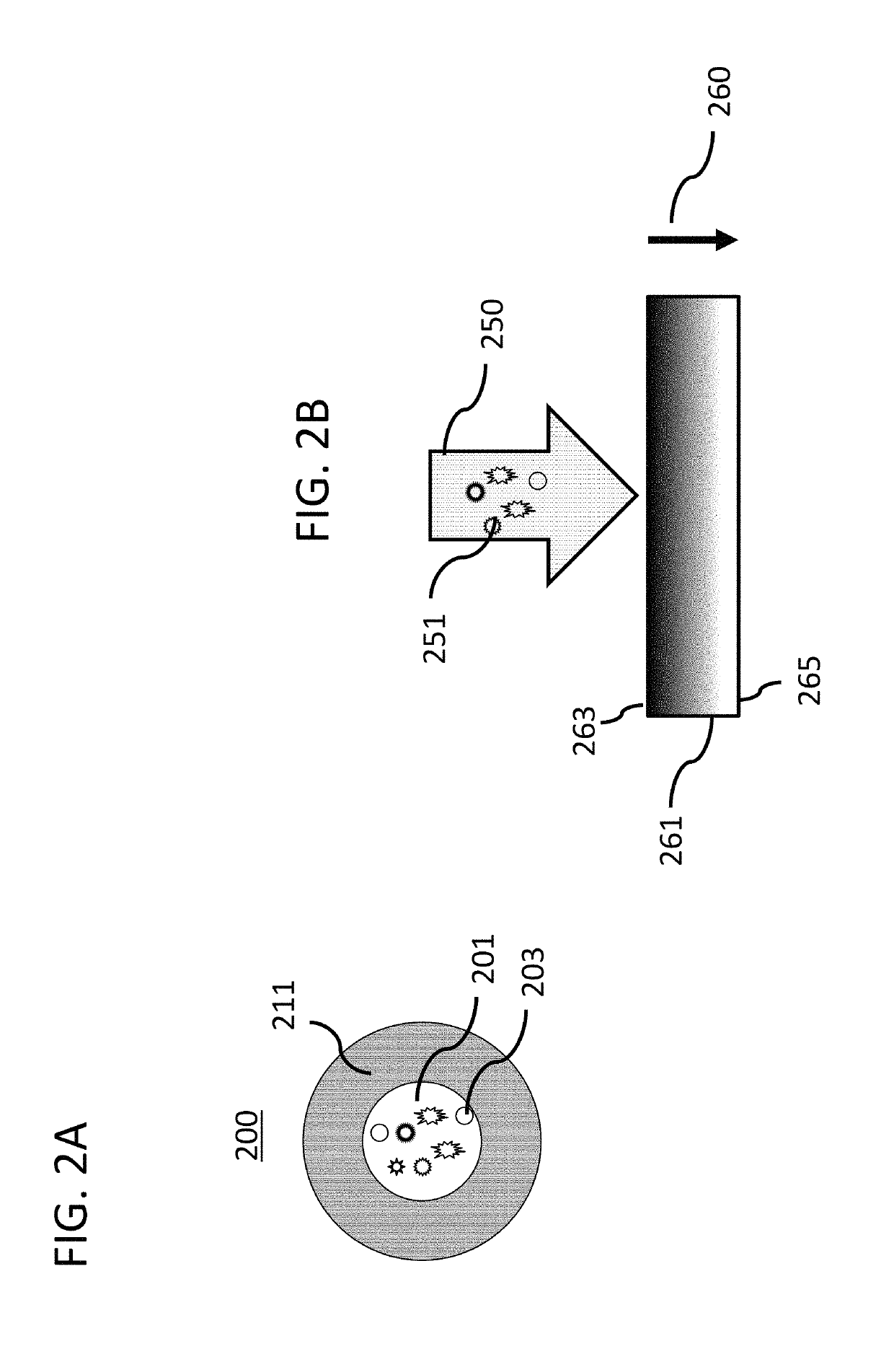Thermal spray enhanced bonding using exothermic reaction
- Summary
- Abstract
- Description
- Claims
- Application Information
AI Technical Summary
Benefits of technology
Problems solved by technology
Method used
Image
Examples
example 1
[0058]In general, the same alloy (via a cored wire) was applied to a substrate with and without the disclosed exothermic reaction for comparison purposes. In particular, two cored wires were made that included the same outer sheath material. Both of the inner powder materials of the cored wire samples were the same (including the same amounts of boron and carbon) except that sample FAB included aluminum and iron oxide powder materials, while Sample FB did not use these aluminum and iron oxide materials (and instead used conventional iron powder). Thus, sample FAB included certain powdered elements that would utilize an exothermic reaction while sample FB was a typical cored wire alloy that would not include an exothermic reaction. Both alloys included the same amount of boron and carbon (approximately 4 weight % of boron carbide). In this embodiment, the inner core is approximately 30 weight percent of the wire and the outer sheath (steel) is approximately 70 weight percent of the w...
example 2
[0065]As mentioned above, various compositions can be utilized within a cored wire to produce an exothermic reaction in the resultant coating as applied via thermal spray techniques. Another set of tests (similar to the above described tests) was performed on steel test blocks using a different wire composition. In this additional alloy embodiment, the utilized cored wire composition included powdered elements of lithium in addition to aluminum and iron oxide, along with boron and carbon. This coating is referred to as FABLi, as it uses a lithium reactive element. In contrast, the tests in Example 1 only utilized aluminum and iron oxide as the reactive elements to create the exothermic reaction Like the FAB alloy from Example 1, the inner core is approximately 30 weight percent of the wire and the outer sheath (steel) is approximately 70 weight percent of the wire. This coating was applied to a steel test sample via conventional thermal spray techniques as described above. As detail...
PUM
| Property | Measurement | Unit |
|---|---|---|
| Fraction | aaaaa | aaaaa |
| Fraction | aaaaa | aaaaa |
| Particle size | aaaaa | aaaaa |
Abstract
Description
Claims
Application Information
 Login to View More
Login to View More - R&D
- Intellectual Property
- Life Sciences
- Materials
- Tech Scout
- Unparalleled Data Quality
- Higher Quality Content
- 60% Fewer Hallucinations
Browse by: Latest US Patents, China's latest patents, Technical Efficacy Thesaurus, Application Domain, Technology Topic, Popular Technical Reports.
© 2025 PatSnap. All rights reserved.Legal|Privacy policy|Modern Slavery Act Transparency Statement|Sitemap|About US| Contact US: help@patsnap.com



